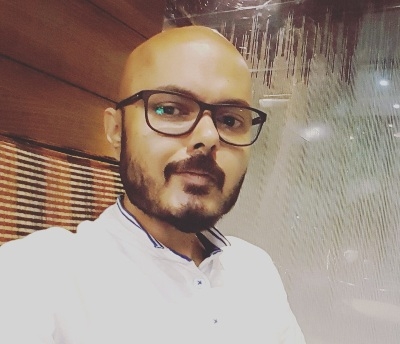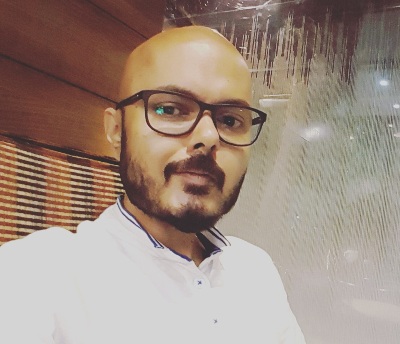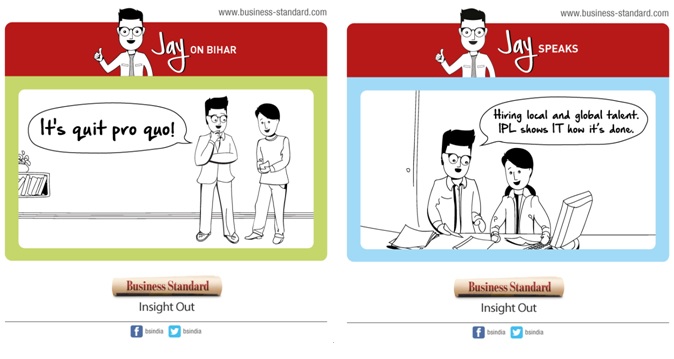
 “The field for business print in India is quite small, and I respect (most of
“The field for business print in India is quite small, and I respect (most of ![]() ) the players in it. They are trying out new things, in terms of content, packaging, communication, digital avenues, 360 degree activation, etc.; which is good for the industry. However, in the larger context of the competition I’d referred to, it’s a continuous learning curve for me.” Said Moneesh Chakravarty, Marketing Head Business Standard.
) the players in it. They are trying out new things, in terms of content, packaging, communication, digital avenues, 360 degree activation, etc.; which is good for the industry. However, in the larger context of the competition I’d referred to, it’s a continuous learning curve for me.” Said Moneesh Chakravarty, Marketing Head Business Standard.
In an interview with MediAvataar India, Moneesh shred his idea of a perfect conversation between a brand and the consumer and how the changing media landscape has made him push the envelope of marketing even further.
Here is the complete Q&A….
MediAvataar: Some of the biggest changes that have taken place in the print business over the last few years.
Moneesh: The biggest change, which I feel has led to most of the rest, is there has been an increasing information overload in the last few years and an excess of media platforms to consume it. People take in what matters to them on the fly, on any medium convenient at the time of consumption. The news ‘paper’ is just one of them.
This basically means that print occupies the same space as other traditional and new age media, and vice versa, in terms of both consumers and advertisers. The lines within and across media formats are blurred.
MediAvataar: With the changes in readership pattern over a period of time how has the marketing strategy changed?
Moneesh: The media agnostic, on-demand, consumption scenario puts a huge premium on creating a strong brand. One the readers can relate to (which ‘speaks’ their language in both content and communication) and generates enough conversation to stay around the top of mind, will most probably be the brand of choice.
To give an example, we did a repositioning earlier this year. With a new baseline ‘Insight Out’, the communication route features a character – Jay, who gives his take on various issues related to the business-scape and other current happenings, in the form of topical sketches. The issues and tonality are relevant to our readers, and evoke conversation. The overall premise makes us a bit lighter and more contemporary.


A greater focus and efficiency of marketing efforts is another evolving perspective. Ad-spends aren’t going to increase (anytime soon, at least). Whereas, better ERP/ CRM systems and digital analytics have enabled knowing both print and digital readers more than ever. This means we can write and do more of what really matters to our reader base.
MediAvataar: The current generation knows exactly what they want to consume, how do you shift gears for such strong headed TG?
Moneesh: What kind of content they want to consume, perhaps. From which media brand, maybe not. The millennials have some brand loyalty in that, but the extent of generic consumption is far bigger. Shift some of the latter to your brand and you’d have increased your base considerably.
Mapping the day in life of a consumer and being present at the touchpoints helps. Many of our relatively younger readers and potentials sample the newspaper, website and social media through the day. Some may not read us but follow on social media, and other permutations like that. Our topicals, featuring Jay, are published in the day’s paper, posted a few times on Twitter and Facebook, put as banners on the website, and embedded in relevant digital stories; in an attempt to cover multiple touchpoints.
For the newspaper, we try to ensure the product’s visibility at the places that matter. Our IndiGo edition is one such case.
On the content side, analysis and opinion pieces on trending issues are posted on the website real time, and often feature high on search results. When people search a topic, land on a story and see its worth, they come directly to the website the next time or subscribe to it.
MediAvataar: What according to you is a perfect conversation between a brand and the consumer?
Moneesh: The same as all good conversations – one in which both are communicating on the same plane! A brand needs to seem approachable and respond (in real time, nowadays) to consumers whenever they need to.
Take Business Standard, for example. We are specialists in economy and finance. Which means, the brand can be a conservative professor to the consumer.
However, being a ‘knowledgeable friend’, or a ‘mentor’ who is closer in age and empathy, would make it much more approachable. We have always tried to tilt towards the latter, and the repositioning makes it more so.
MediAvataar: Is print medium getting more difficult to market than ever before?
Moneesh: Yes, and no!
As I’d mentioned we face a larger competition, whereas we know our readers better. While consumers have a lot of choices, it is easier to customise content and marketing strategies for them.
MediAvataar: How do you look at the competition?
Moneesh: The field for business print in India is quite small, and I respect (most of ![]() ) the players in it. They are trying out new things, in terms of content, packaging, communication, digital avenues, 360 degree activation, etc.; which is good for the industry.
) the players in it. They are trying out new things, in terms of content, packaging, communication, digital avenues, 360 degree activation, etc.; which is good for the industry.
However, in the larger context of the competition I’d referred to, it’s a continuous learning curve for me.
MediAvataar: What has been the biggest challenge for the company so far?
Moneesh: Being a stand-alone media company is a challenge, with conglomerates occupying most of the field. However, it gives us the opportunity to be streamlined, and occupy our domain in the best possible manner. We faced this at Red FM (except the South) as well, with whom I had a long stint until last year. And it’s a great example of what well-planned content and marketing can do for such a brand.
MediAvataar: What is there in the pipeline to forward to?
Moneesh: Last year, we were the first among the larger media companies in India to initiate premium digital subscriptions. We look forward to creating more value for our premium subscribers.
Also, the new communication route lends itself to possibilities, especially in digital.
